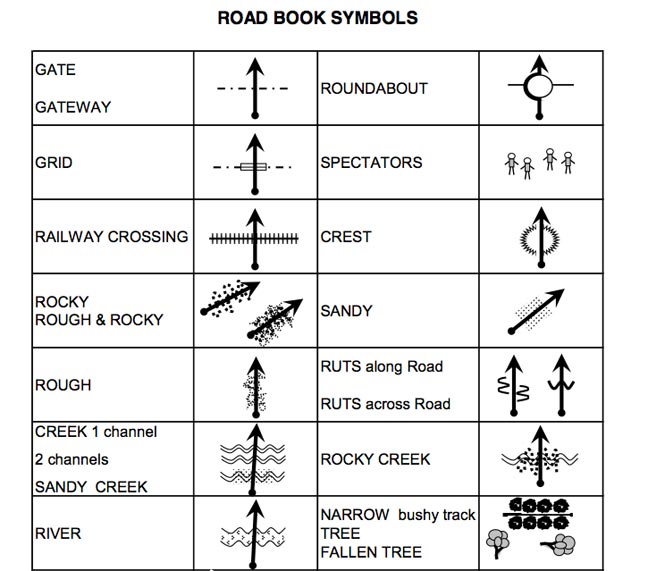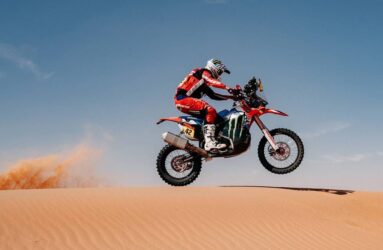Safari Symbols
So you’ve noticed riders in the Dakar Rally and Australasian Safari always seem to be looking down at that big map roller sitting above their bike’s instrument panel. Are they really reading a map? And how the hell can they read anything when their doing 160km/h over rough ground?
No, it ain’t a map. Each night, competitors are handed a map of sorts — it’s called a “Road Book”, which is basically a scroll of paper riders feed into their map rollers. Buttons on the handlebars help them scroll through the map over the course of the day. As you’ll see from the list of examples below, the symbols supply riders with information about everything from landmarks to cautions — all of which is designed to help them navigate their way safely around the 3600km Safari course. Next to each symbol on the real maps will be a km marking and an indication of the distance from the previous instruction. This way, riders can use their trip-meters in conjunction with the map roller to anticipate approaching dangers and direction changes. Yep, there’s a lot a rider has to pay attention to while he’s humming along at high speed, huh? Which is why events like the Australasian Safari are so gruelling on both body and mind.

By the way, the reason it’s called a Road Book is that the Auto class competitors are supplied the same info in a book each day, so the navigator (the bloke with two free hands) can communicate instructions to the driver. Much easier!
For more information, check out www.australasiansafari.com.au

Get the full list of symbols from the official Australasian Safari website.









Be the first to comment...